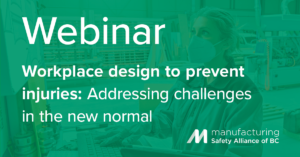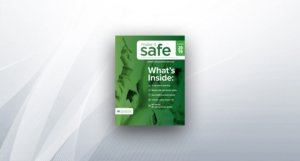Interrupt the spread
Lisa Thibault2021-01-19T15:54:55-08:00“At the plant level, one of our biggest challenges is managing communication—mainly driven by people’s anxiety. What we try to do is really explain why we do things first.”
—Craig Ogilvie, Conagra Foods Canada, in a May webinar on COVID-19 Best Practices
A. If it is not practicable to eliminate work that causes workers to be within two metres of each other, keep the encroachment on physical distancing as brief as possible, through planning the work task and providing instructions to workers—or place physical barriers between workers. Consult your Joint Health and Safety Committee or Worker Representative to identify risks and effective controls for your workplace.
3 COVID-19 tips
In a June webinar, we invited environmental health scientist Dr. Angela Eykelbosh of the BC Centre for Disease Control and the National Collaborating Centre for Environmental Health to share her research on the design and implementation of physical barriers in areas where adequate physical distancing is not possible.
- Protect the breathing zone
The primary job of these barriers, she noted, is to “protect the breathing zone of the worker—defined roughly by a radius of 30 centimetres or 12 inches around that person’s nose in every direction. Aim to shield the breathing zone of the tallest and smallest people that will be both standing or seated for most of the time” in a particular work zone. - Secure barriers
Ensure barriers are secured to avoid creating a tripping hazard or allowing a ceiling-suspended barrier to “waft” air from one worker’s breathing
zone into someone else’s. - Keep barriers clean
Use a material that is easy to clean—and clean daily (or more frequently if the job requires a worker to touch it frequently—and avoid very tall barriers that impede ventilation in the room.
In addition, Dr. Eykelbosh notes, it’s important to consider how barrier may restrict or adversely affect the pace, posture, and movement of workers on the production line.

Workplace design to prevent injuries
Click the image to watch the webinar with Alliance ergonomist Dr. Era Poddar and Dr. Angela Eykelbosh.



